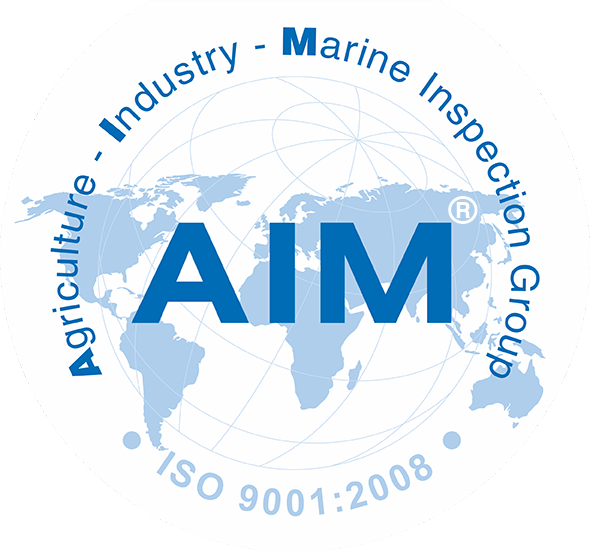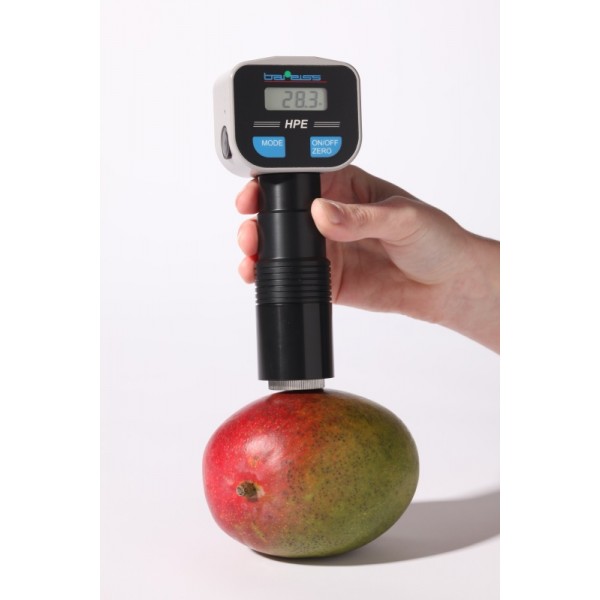Fruit inspection and vegetable quality control
Fruit inspection and vegetable quality control certification
AIM Control (AIM Group®) is third party in providing Fruit inspection and vegetable quality control certificates at all of Western and Asia locals from seller to buyer. Email
02 types of AIM’s inspection and testing services of fruits and vegetables in fresh
-
Inspection of fruits and vegetables at the site/ vendor
-
Testing of fruits and vegetables in the laboratory
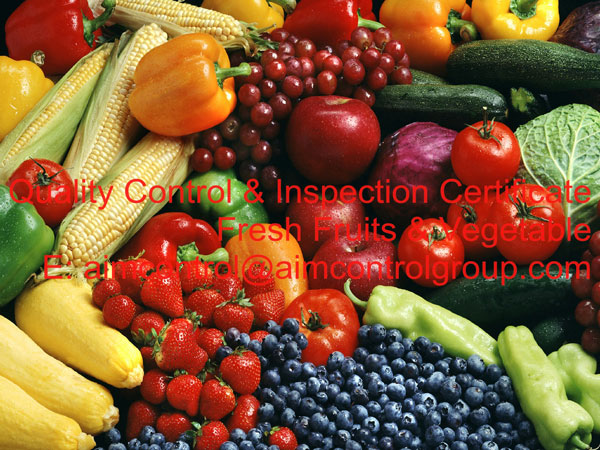
The followings are AIM Control (AIM Group®) Fruit inspection and vegetable quality control technique procedure
- Identify the critical points in the process follow sheet which contributes to the major quality characteristics.
- Sample each critical point depending upon batch or continuous operation what is being sample, and so what extent it is critical.
- Evaluate and relate quality at critical successive stages to costs and yields.
- Relate costs to deviation from specified levels.
- Evaluate data collected against standards and legal requirements.
- Providing consistent system for orderly continuous evaluation of quality from the selection of raw material through different stages of processing.
- Diagnose problems and predict troubles before they happen. Determine the extent of drifts and shift in production, and minimize or localize deficiencies.
- Evolve a system to determine how well the quality control programmer is succeeding.
- Fundamentals and technique of quality control are basically the same irrespective of whether one is dealing with a food product or automobile part.
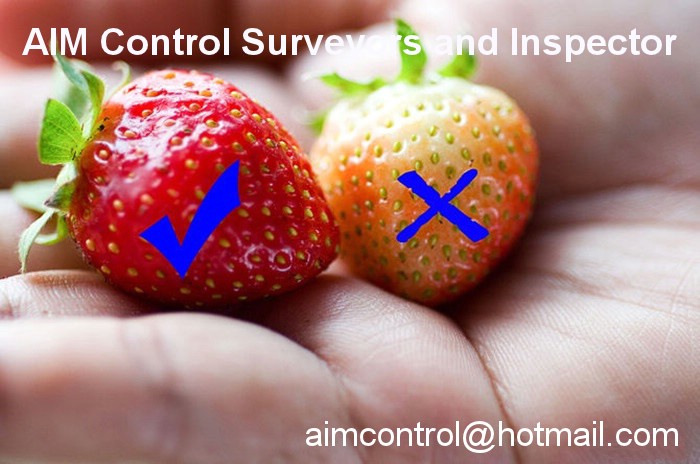
Taking canned fruit in syrup as an example, the critical control point of inspection are followings:
Raw Material
The importance material used is fruit, sugar and citric acid. Water used in making syrup should be suitable for purposes of canning.
- Fruit: Variety maturity, extent of spoilage or damage, pesticide residues, deterioration in handling and storage, potential contamination, etc. Acceptance and/or ‘variable sample.
- Sugar & citric acid: Sugar & citric acid with respect to physical and chemical characteristics and former, in addition, with regard to
Tin Containers
- Type of tin plate, weight of tin coating, side seam, and double seam accuracy.
Washing of fruit
- Public health significance.
- Quality of water
Preparation of fruit
- Efficiency of preparatory operation like peeling, slicing, coring, trimming, and freedom from damage or diseased portion.
- Uniformity with respect to color, texture and maturity.
Preparation of syrup
- Calculation of strength of covering syrup required in relation to total soluble solids in fruit, filled weight of slices, weight of covering syrup added and cut-out brix required in the finished product.
- Control of weight, temperature and uniformity of strength at the time of filling – control chart.
Filling
- The coefficient of variation in the weight of empty cans is generally about 4%.
Exhausting
- Periodic checks should be made to ensure that the cans coming out of the exhaust box have attained the desired can center temperature. It has direct relation to ultimate vacuum in the can which in turn is related to shelf-life and behavior at different altitudes.
Container closure operation
- Protection of empty containers
- Cleaning of containers before filling.
- Maintenance of can seams
- Measurement of can seams – external and internal, firmness testing
Processing
- To be according to good manufacturing practices
- Pasting of process schedules near retorts
- Recording of retorting operation
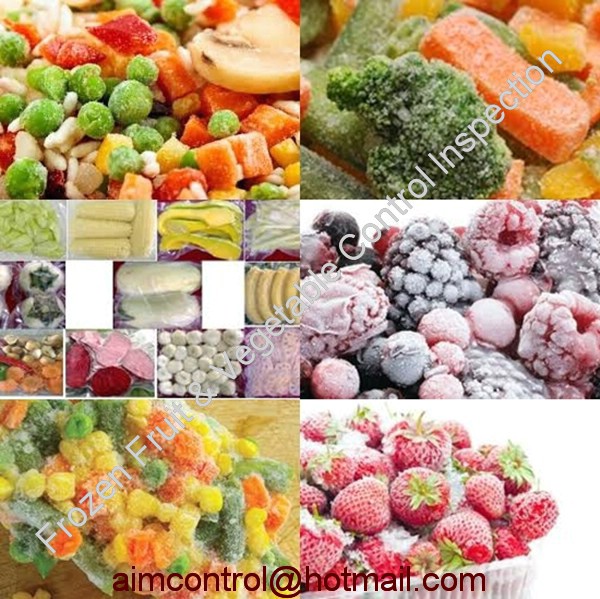
Cooling water
- Microbiological quality
- Chlorine content
Post-process handling
- Prevention of filled containers from damage and contamination
- Cooling
- Warehousing – temperature, humidity etc.
Clean up and sanitation
Steam quality
Examination of finished product
Sanitation control
- Sampling
- Location: product or ingredient contact surfaces and non-product contact surfaces – number of colonies in each case.
- Visual appearance
- Microbiological level
- Rating – good, fair or poor

General inspection
- Raw material receiving department
- Product preparation area
- Packing and dispatching area
- Windows, doors, wall surfaces, floor, etc.
- Mould, yeast and bacteria, the store must be protected from temperature fall of more than 5 Degree Celsius.
AIM Control (AIM Group®) analysis and quality control inspection of fruit and vegetable products. Authoritative, need-based and update, the AIM Control (AIM Group®) action has been principally designed to meet the day to day requirement. Wherever needed, reference values or standards – Central Food Technological Research Institute (CFTRI) PFA, ISI or FAO/ WHO Codex Alimentarius (Alimentary).
Please kindly review the inspection of foods or fresh commodity, fruit and frozen foods inspections

The followings are "How To Select Fresh, Ripe Fruits And Vegetables"
Most of us know the feeling of buying fruits or vegetables only to find out that they’re either already spoiled on the inside or so under-ripe that they need to be left out for days before eating.
Every fruit and vegetable has its own clues to its freshness. We’ve discussed how you should properly store your food, but if you’re standing in the fruit & veg section trying to decide if something is safe to buy.
The most important thing to remember when inspecting produce is to use your senses. Ask yourself how the item smells, how it feels, and whether it looks appealing, or at least like the other items in the store.
The surface should be largely smooth and even, with a firm-but not rock hard-surface. If you feel pits and dents under the surface, the flesh of the fruit has probably been damaged by shipping, or is slowly rotting. If your plums, berries or nectarines are rock hard, they’re not ripe. Also, pay attention to weight: heaviness can indicate how juicy a fruit or melon is, especially with oranges, lemons and watermelon.

Give the fruit a good whiff. There’s no need to hold it directly up to your nose, but you should pick up a light aroma from it. A strong aroma can indicate over-ripeness, and if the fruit smells a bit sour or stinky, you’re probably holding an apple or bag of grapes that’s past its prime. A light, sweet smell is a good indicator that your fruit is fresh and ripe. Smell is particularly important when it comes to melons and pineapple, which can smell very strongly when past their prime, so the lighter and sweeter the better.
Tree-ripened fruit should have even coloration across the surface, and avoid anything with dark marks and spots, or citrus fruits with white streaks or colours on the surface. Melons don’t give too many visual or colour cues, but look for the obvious: bruises, dents, and other pockmarks. Don’t dismiss a vine-ripened melon because of a little scarring on one side. As long as it’s not tender or thinner than the rest of the rind, it’s likely only the place where the melon rested on the ground while ripening.
Some of the same rules for fruit apply to vegetables. Pay attention to the surface of the vegetable and make sure it’s consistent, evenly coloured, and firm all the way around. With most vegetables like cucumbers, capscium, onions and potatoes, you want them to be as firm as possible. Even the gentle give you look for in fruit can indicate over-ripeness in vegetables. Softness in specific areas is generally an indicator of slow rotting or bruising, even if you don’t see anything obvious that would indicate spoilage.

With leafy greens like lettuce and spinach, look for firm, crisp, and plump leaves that are consistently coloured. Expect a little brownness and a few tears in the leaves due to shipping or handling, but they should be the exception, not the rule. The majority of the leaves should be green, smooth, and unbroken. You also want to make sure that the leaves give a good snap if you break one. Look for the same plumpness and crispness with green or string beans or peas in the pod.
Root vegetables like potatoes, garlic and onions should be firm and tough, as well. Avoid root vegetables with cracks on the base, this means it’s too dry. Most vegetables don’t give you clues to their ripeness by smell the way that fruits do, but you’ll know the vaguely stinky smell of slow rot or mould when you smell it. It’s common sense, but steer clear if something doesn’t smell right.
Trust Your Senses
It’s worth noting that most commercial farms pick fruits and vegetables long ahead of their ideal ripeness. Try to see through the regular washings and coats of wax they get, and trust your nose and sense of touch as much as you do your eyes. An apple that’s shiny, evenly coloured, and heavily waxed but super-soft to the touch is probably mushy and no good.
We’re big fans of farmers markets and local grocery stores, which often have better turnover and are more likely to have produce that hasn’t been in cold storage for months.
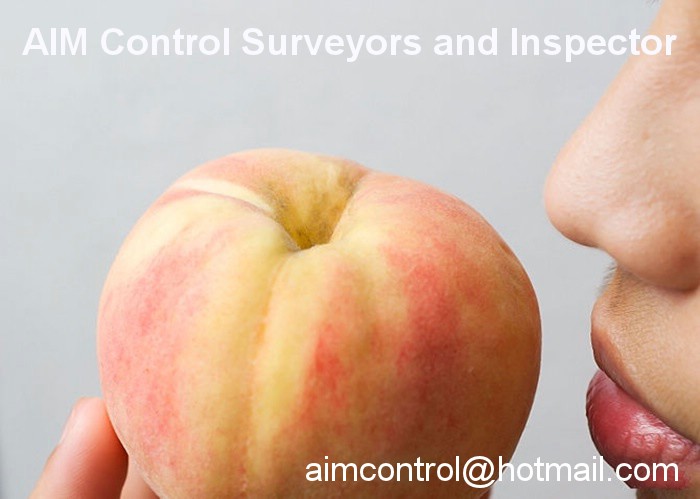
Buy in season
Fruit that comes out of season comes from farther away, and generally lacks the flavor of fruit in season
Use your senses to pick good fruit at the grocery store. The smell, touch and look of the fruit are all important in determining whether you get ripe, delicious fruit or sour, unripe or bland fruit.
Check the stem of the fruit, if it has one. The stem is the natural clock of when the fruit was picked. Green stem with ripe fruit= A winner; Green stem with very hard fruit Picked early and will possibly become mealy when ripened; Shriveled dry stem = Picked long ago lacking flavor and texture of fresh fruit.
Search for the fruit you want until you have found it. The less popular fruits may not be in season which can mean that they will not be in the store at that time
Look for mold on the fruit. If you find any do not take it.
Check if the color is what it's supposed to be. For example, don't take a green strawberry
Look for bruises and spots that indicate the fruit has been roughly handled and damaged.
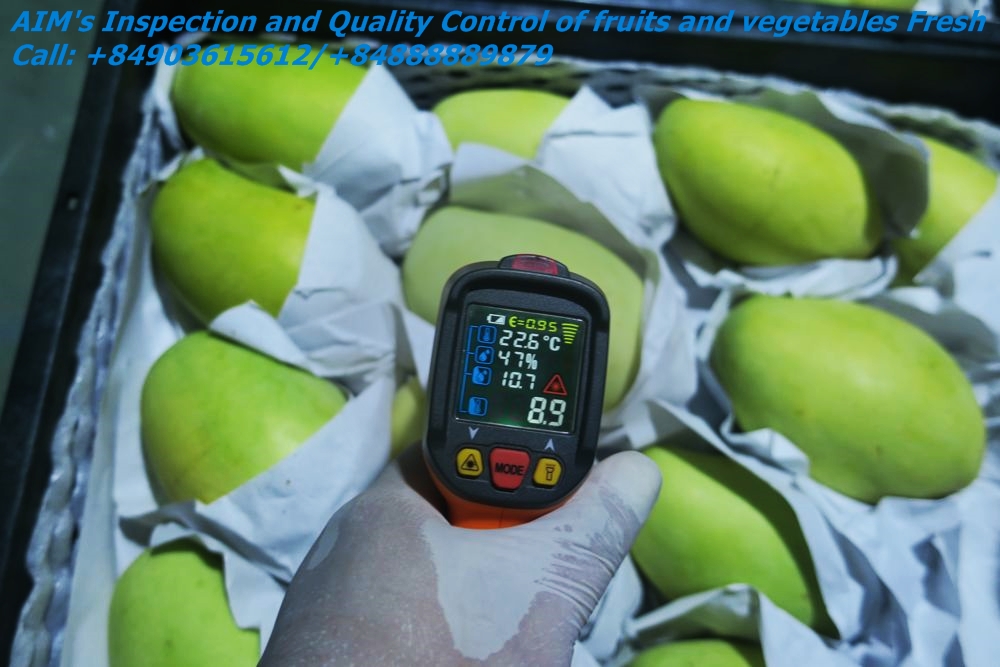
Smell the fruit. Some fruits have a "ripe" odor, like cantaloupe and honeydew melons. Some fruit may have a sour odor if they are beginning to spoil
Feel the fruit, but do so carefully. Firm fruits like apples and pears should feel firm, but peaches, plums, and other "soft" fleshed fruits should feel slightly soft. If you test it this way, do so carefully as not to damage the fruit.
Select fruit that is in a bin or open storage box, not in bulk bags or boxes. The old saying, "One rotten apple will spoil the whole lot," is often true, and you will seldom find a large bag of fruit without at least some damaged fruit in it.
And based on the Fruit and vegetable technical expert inspectors and surveyors.
Quality Inspection and Control Testing of fruits and vegetables in fresh
50 years ago, AIM Control (AIM Group®) specializes in providing the inspection and quality control services for fruits and vegetables in trade and import-export.
Quality Inspection of fruits and vegetables at the site/ vendor
-
In the import, export and commercial trading of fruits and vegetables, the consignment is shipped from buyer to seller, so AIM Control (AIM Group®) provides the quality control and quantity inspection services for fruits and vegetables at the time of packing into the package, at the time of loading of goods into the container, at the delivery stage of at the loading port to ensure the quality of fresh fruits and vegetables before shipping, packaging in accordance with the regulations and standards and maintaining the appropriate temperature for shipments during transit and transportation, avoid possible losses and claims.

-
In addition, AIM Control (AIM Group®) also provides damages survey and losses assessment for shipments of fruits and vegetables at the locations of consignees and receiver/ buyers of goods while detecting the fruit shipments are damaged and lost in cooperation with terms of quality, quantity in Contract/Purchase Order . . .from various Causes that Receiver or Buyer have no send the evidence of damages to the seller of the true information or the results of the actual quality inspection and assessment of the damaged fruits and vegetables to complain or negotiate and resolve of claim disputes.

Quality testing of fruits and vegetables in the laboratory
Testing the quality components of fruits and vegetables
Moisture, Total Sugar, Reducing Sugar, Carbohydrates, Raw Fiber, Starch, Salt (NaCl), Piperin, Total Acid, Volatile Acid, Total Ash, Insoluble Ash in HCl, Total Phosphorus, Protein, Fatty, Fat Saturation, Dietary Fiber, Energy (calculated from fat, protein, carbohydrate) and many other indicators.
Testing for heavy metals in fruits and vegetables
Arsenic (As), Mercury (Hg), Cadmium (Cd), Lead (Pb) and other heavy metals are harmful to healthy porcelain.
Microbiological Testing - fresh vegetables, frozen vegetables
Total aerobic bacteria, Coliforms (CFU), E.coli (CFU), Staphylococcus aureus, Clostridium perfringens, Salmonella spp.
Microbiological Testing - Salted vegetables, dried vegetables, coffee, cashews, pepper…
Total aerobic bacteria, Coliforms (CFU), E.coli (CFU), Clostridium perfringens, Bacillus cereus, Yeast, Mold
Quality tests of fruits and vegetables according to standards
-
Nutrition composition analysis
-
Analysis of pesticide residues
-
Testing organic pollutants
-
Microbiological Testing
-
Testing for toxic heavy metals
-
Radiation test
-
Genetic testing
-
Testing veterinary drug residues and antibiotics
-
Analysis of fungal toxins
-
Testing vitamins and minerals
-
Testing milk and milk products
-
Testing of food packaging
-
Organic product testing
-
Testing functional foods
-
Testing cosmetics and consumer goods
-
Testing of imported and exported food
-
Testing seafood, frozen seafood, packaging
-
Testing agricultural products and foodstuffs
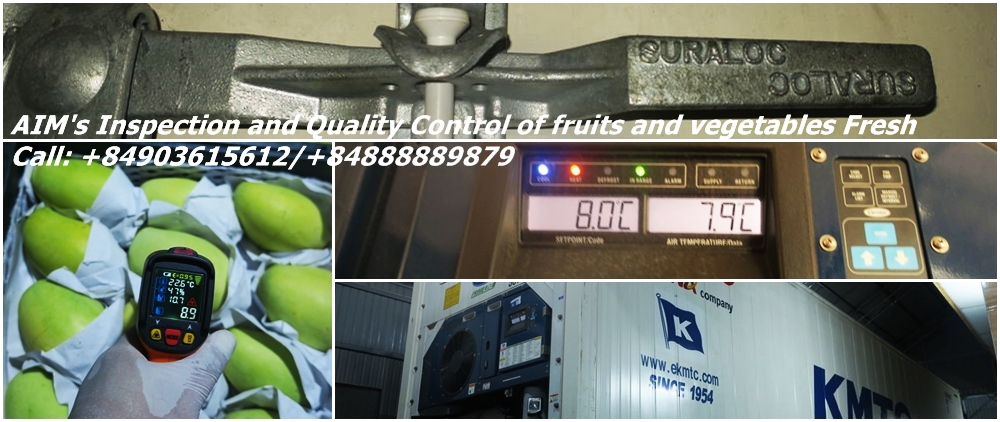
See more quality control and inspection certificates for goods of importing / exporting
Other activity :
- Quality inspector
- Face Mask Quality Control Inspection
- Fish fillet quality control inspection services
- Timber Wood quality inspection
- Crude and refined oil cargo test and inspection
- Boat Yacht quality inspection and discharging loading survey
- Consumer Goods quality assured inspection
- Zinc Oxide quality inspection and loading discharging supervision
- Freight Inspection of transport goods
- Product quality inspection

